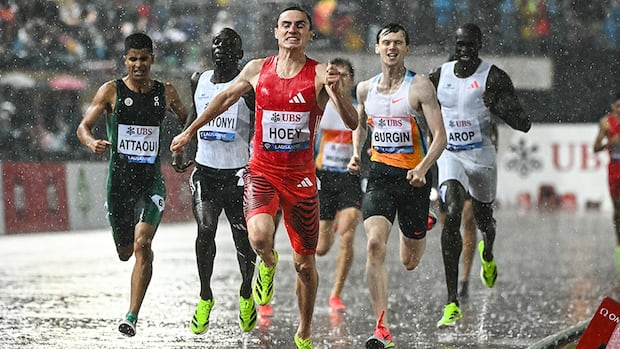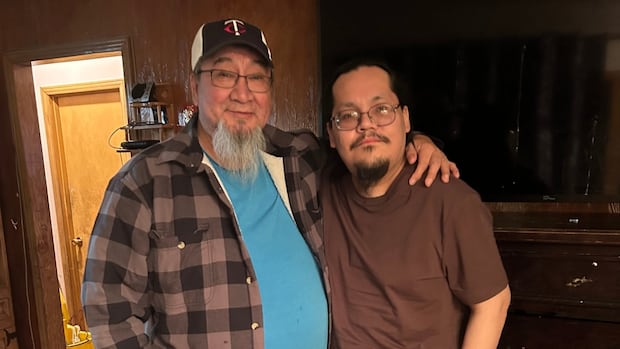Eight years after a deadly boxing match in Edmonton triggered calls for the province to regulate combat sports, Alberta government officials say they need more time to consider the changes.
An inquiry into the 2017 death of fighter Tim Hague called for sweeping changes to how combat sports are governed in Alberta, including a key recommendation that a single provincial commission be established to oversee every match.
Currently, municipalities are left to regulate combat sports.
Despite the need for reform highlighted by Hague’s death — and more recently the 2024 death of Trokon Dousuah during an amateur MMA fight near Edmonton — the province has yet to take definitive action.
Some of the changes proposed in the Hague inquiry recommendations have been rejected outright. Others, including the call for a provincial commission, remain under consideration.
Critics argue that Alberta’s inaction is irresponsible and that Alberta’s current system fails to protect fighters from the dangers they face in the ring or cage.
‘Dragging their heels’
Erik Magraken, a combat sports regulatory lawyer in B.C., said Hague’s legacy should be the impetus for change, but the province continues to choose “the path of neglect,” he said.
Dousuah’s death demonstrates that additional delays are dangerous, he said.
“Alberta seems to be dragging their heels,” he said.
“Tim Hague died eight years ago. Alberta has had a long time to respond.”
Dr. Randolph Knipping, a certified ringside physician and former Ontario coroner, said Hague’s death underscores the urgent need for reform.
Alberta is the only province without provincial oversight for combat sports and fighter safety should not depend on geography, Knipping said.
“If you rely on the municipalities, it’s going to be a patchwork quilt.”
A fatal uppercut
Hague, 34, suffered a brain hemorrhage on June 16, 2017, after suffering a knockout during a boxing match licensed by the Edmonton Combative Sports Commission.
A left uppercut in the second round put Hague on the canvas. He walked from the ring but lapsed into a coma and was taken off life support two days later.
He suffered a brain bleed and subdural hematoma. His brain also showed signs of traumatic encephalopathy, a degenerative disease caused by repetitive head trauma.
Hague, who took the fight on short notice, had a history of knockouts and concussions. His most recent medical suspension had expired days before his fight.
His family filed a wrongful death lawsuit in 2019 seeking more than $5 million in damages for alleged gross negligence causing death.
The family and their lawyer, Ari Schacter of Assiff Law, declined to comment on the status of the lawsuit.
The calls for provincial oversight and tougher safety rules that followed Hague’s death grew louder last year following the Nov. 25, 2024, death of Dousuah in an amateur charity match west of Edmonton.
Dousuah, a 34-year-old novice fighter, fought three rounds but was carried out of the ring, later dying in hospital.
Following that fatal bout, former sports minister Joseph Schow said Alberta would undertake a review of combat sport safety and explore the possibility of provincial regulation.
Consultations began last year, but there is no timeline for the review’s completion.
‘Neither accepts nor rejects’
In her 2024 inquiry report into Hague’s death, Justice Carrie Sharpe said the province should handle sanctioning of combat sports in Alberta.
In its formal response to the inquiry, the sports ministry said it “neither accepts nor rejects” this recommendation. The ministry is “considering” a commission but requires time to engage with stakeholders to identify how the province could be involved in overseeing the sport.
Andrew Boitchenko, Alberta’s new sports minister, declined a request for an interview. A ministry spokesperson told CBC News that a statement issued by Schow in March — asserting Alberta’s commitment to athlete safety — “still stands.”
In that statement, Schow said how the inquiry recommendations are implemented depends on the future role of the province in regulating combat sport.
Recommendations rejected
Of the 14 recommendations, four were rejected outright by the province.
Among them, a recommendation that a government-run database be established to track each athlete’s records. In correspondence with the inquiry, ministry officials said such a database would be “duplicative” and of “limited utility.”
The province also rejected a recommendation that concussion spotters be present at every event and that they be given the authority to stop a fight.
The ministry said it was an unnecessary measure, telling the inquiry that ringside physicians are better equipped to recognize the signs of a concussion.
The province also rejected a recommendation that all fighters undergo CT scans every six months, regardless of their injury.
The province said mandating such scans would expose competitors to unnecessary radiation. The “matter requires further analysis” to determine whether other diagnostic tools could be used instead, the ministry said.
Eight other measures were “accepted in principle” by the province, including consistent suspension periods for all combat sports and mandatory yearly training for referees on how to recognize head trauma.
City response
The City of Edmonton accepted six of the inquiry’s recommendations and partially implemented reforms, even before the inquiry findings were published.
These include mandatory suspensions for fighters who suffer knockouts and required medical suspensions between all bouts.
The city, however, rejected two recommendations related to mandatory CT and MRI scans after knockouts.
The Edmonton Combative Sports Commission declined interview requests, but said it remains committed to improving fighter safety and supports calls for the establishment of a provincial sanctioning body.
Don’t wait for another fatality– Dr. Randolph Knipping
While Knipping agreed with many of the inquiry’s suggestions — such as mandatory post-fight suspensions, annual referee training, and clear documentation of injuries — he also criticized others as “key errors.”
He opposed the call for regular CT scans, mandatory imaging after knockouts and a centralized registry, arguing instead for broader diagnostic assessments and a fighter “passport” system to track injuries.
Still, he said the province must proceed with a commission to close regulatory gaps.
There is danger, he said, in allowing safety to be determined locally rather than under a unified provincial regulatory body.
“It’s unfortunate that it takes a fatality to create the attention that this deserves,” Knipping said.
“Cut and paste what works in other jurisdictions. Use what’s already there.
“Don’t wait for another fatality.”






